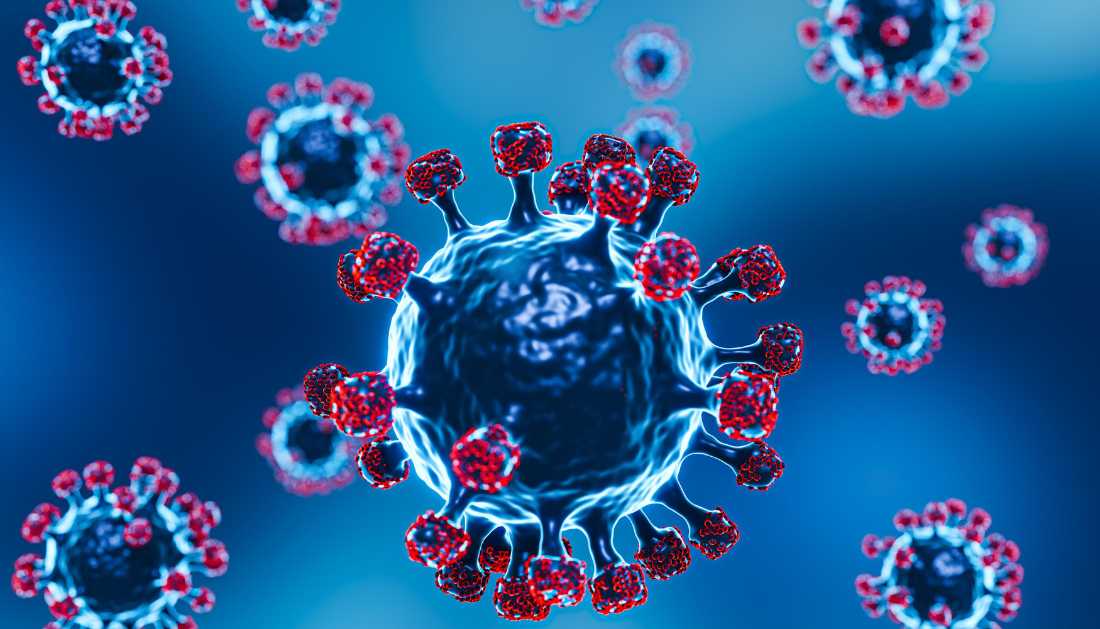

SARS-CoV-2, the coronavirus that causes COVID-19, has continued to mutate and spread as cold winter weather forces people indoors and flu, colds, and other seasonal respiratory viruses proliferate. JN.1 is the most recent strain to get attention, and it appears to be extremely transmissible thus far.
Predicting the evolution of the coronavirus and its offspring can be challenging, if not impossible. However, the Centers for Disease Control and Prevention (CDC) predicts that JN.1 cases will rise this winter. The World Health Organization (WHO) has also classified JN.1 as a “variant of interest.”
“We don’t know much about this new subvariant just yet,” says Heidi Zapata, MD, PhD, an infectious diseases specialist at Yale Medicine.
There are also subvariants, such as HV.1, which was the prevalent strain in the United States in early December, accounting for nearly 29% of cases, more than any other subvariant. (EG.5, which had been the dominating strain during the summer, fell to second place in November and accounted for less than 10% of cases by mid-December. HV.1 is an EG.5 descendent and is thought to be related to it.)
According to the CDC, there is no indication that JN.1 produces more severe cases of COVID or offers a greater risk to public health than other circulating variations.
At the same time, COVID instances are increasing, according to Dr. Zapata. “I would say the most important thing for people to know is that the virus is out there, as are respiratory syncytial virus [RSV] and the flu,” she said. “Any new subvariant is a sign that the SARS-CoV-2 virus is still evolving; it’s still here with us, and we can’t ignore it.”
Where did JN.1 come from, and what makes it unique?
The JN.1 strain first appeared in the United States in September. It is a close relative of BA.2.86 (nicknamed “Pirola”), an Omicron variant lineage that the CDC has been tracking since August. (While the Omicron variation, which first appeared in the United States in 2021, has many progeny, the original strain is no longer in use.)
The difference between BA.2.86 and JN.1 is that the latter has a single mutation in its spike protein, which may or may not affect any of the virus’s characteristics, however preliminary research suggests that it may give more immune evasion.
What do we know — and what do we not know — about JN.1?
Although there isn’t enough information to establish anything conclusively, JN.1 does not appear to cause more severe disease or symptoms that differ from earlier strains. According to the CDC, COVID symptoms are largely comparable across variants, and symptoms and severity are usually more dependent on the person’s immunity than on the variant.
According to the CDC, one interesting element of JN.1 is its rapid evolution, which suggests it may be better at evading immune systems or just more transmissible. According to CDC estimates, JN.1 moved from accounting for 3.5% of COVID cases in mid-November to a little more than 21% about a month later in December, after making its first reported appearance in the United States in September.
At the same time, despite a recent increase in COVID instances, it’s unclear if JN.1 and other novel coronavirus subvariants are to blame. Based on prior patterns, the CDC predicted an increase in COVID and other respiratory disorders during fall and winter.
How can people guard against these novel coronavirus subvariants?
Fears of a “tripledemic” in recent years have been fueled by the possibility of three viruses—SARS-CoV-2, influenza, and RSV—hitting at the same time in the fall and winter.
Vaccines are available this season to help protect against all three of these infections. Everyone 6 months and older can get updated flu and COVID vaccines. In addition, new RSV preventions are being distributed to the most vulnerable populations, including two vaccine options for individuals 60 and older. A monoclonal antibody for infants and toddlers is also available, as is a vaccination given to pregnant women to create antibodies that will help protect their unborn infants from RSV from birth to 6 months.
COVID vaccinations that were updated this fall are expected to provide better protection against JN.1. Furthermore, according to the CDC, COVID testing should be able to detect JN.1 and other strains, and antiviral therapies should remain effective against these variants.
Protective measures can also be beneficial. These include avoiding ill persons, strategically masking while in confined quarters, hand-washing, and being informed about COVID transmission levels in your area. Additional solutions can be found on the CDC website.
“I would advise getting your updated vaccine, consider masking in certain situations, and if you get sick, please test for COVID because you can get medicine to treat it,” Dr. Zapata, the doctor, says.
more recommended stories
 Parkinson’s Disease Care Advances with Weekly Injectable
Parkinson’s Disease Care Advances with Weekly InjectableA new weekly injectable formulation of.
 Brain’s Biological Age Emerges as Key Health Risk Indicator
Brain’s Biological Age Emerges as Key Health Risk IndicatorClinical Significance of Brain Age in.
 Children’s Health in the United States is Declining!
Children’s Health in the United States is Declining!Summary: A comprehensive analysis of U.S..
 Autoimmune Disorders: ADA2 as a Therapeutic Target
Autoimmune Disorders: ADA2 as a Therapeutic TargetAdenosine deaminase 2 (ADA2) has emerged.
 Is Prediabetes Reversible through Exercise?
Is Prediabetes Reversible through Exercise?150 Minutes of Weekly Exercise May.
 New Blood Cancer Model Unveils Drug Resistance
New Blood Cancer Model Unveils Drug ResistanceNew Lab Model Reveals Gene Mutation.
 Healthy Habits Slash Diverticulitis Risk in Half: Clinical Insights
Healthy Habits Slash Diverticulitis Risk in Half: Clinical InsightsHealthy Habits Slash Diverticulitis Risk in.
 Caffeine and SIDS: A New Prevention Theory
Caffeine and SIDS: A New Prevention TheoryFor the first time in decades,.
 Microbial Metabolites Reveal Health Insights
Microbial Metabolites Reveal Health InsightsThe human body is not just.
 Reelin and Cocaine Addiction: A Breakthrough Study
Reelin and Cocaine Addiction: A Breakthrough StudyA groundbreaking study from the University.

Leave a Comment